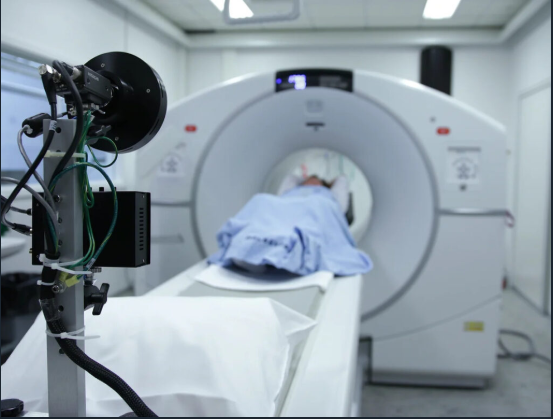Ultrasound-Guided Interventional Procedures: Increasing Precision in Biopsies, Injections, and Pain Management

Modern medicine increasingly leverages imaging not just for diagnosis, but for real-time guidance during therapeutic procedures. Among these, ultrasound-guided interventions (UGIs) are a powerful and growing subset — enabling minimally invasive biopsies, precise injections, and effective pain-management techniques with a level of accuracy and safety that was difficult to replicate in the past. These procedures are among the most valuable offerings of high-quality diagnostic ultrasound services, and their adoption is reshaping interventional practice.
In this article, we’ll explore the different types of ultrasound-guided interventions, evidence for their effectiveness, advantages over traditional methods, and what patients should know when seeking these services.
Types of Ultrasound-Guided Interventions
Ultrasound-guided techniques can be broadly categorized into three major areas:
-
Biopsies: Collecting tissue samples from organs or lesions (e.g., liver, lung, lymph nodes) for diagnosis.
-
Therapeutic Injections: Delivering medications (e.g., corticosteroids, anesthetics) into joints, tendons, or around nerves.
-
Pain Management Blocks: Targeting specific nerves or muscle trigger points to relieve chronic pain.
Each of these applications benefits from real-time imaging: clinicians can visualize the needle, avoid sensitive structures, and ensure accurate placement.
Why Ultrasound Guidance Offers Major Advantages
Safety and Lower Complication Risk
One of the most compelling advantages of ultrasound-guided biopsies is their favorable safety profile. A landmark study comparing ultrasound vs. CT-guided percutaneous biopsies found that ultrasound interventions had a technical success rate of 97.6% — comparable to CT — but significantly fewer complications. Specifically, the complication rate for ultrasound-guided procedures was 7.6%, versus 30.3% for CT guidance.
Because ultrasound does not involve ionizing radiation, it eliminates radiation exposure risk for both patient and operator — a clear benefit over CT in many situations.
Speed and Efficiency
Ultrasound tends to be faster than CT-guided procedures. In the same study above, the median time of an ultrasound-guided biopsy was 19 minutes, compared to 25.5 minutes for CT. Quicker procedures reduce patient discomfort and free up imaging space, improving workflow in diagnostic centers.
Real-Time Visualization
Unlike CT which captures snapshots at intervals, ultrasound provides continuous, real-time imaging during needle advancement. This dynamic view helps clinicians confirm the needle path, avoid vessels, and make adjustments on the fly.
Enhanced Accuracy for Injections
When it comes to injections into joints or around nerves, ultrasound-guided injections are often more accurate than those using anatomical landmarks. For example, a study of knee injections reported needle placement accuracy of 95–96% with ultrasound guidance — significantly better than landmark-based approaches.
In shoulder pathology, a systematic review and meta-analysis reported that ultrasound-guided injections led to greater six-week pain reduction compared to landmark-guided injections.
Improved Pain Management
Ultrasound-guided nerve blocks and joint injections reduce risk of injury to surrounding tissues and blood vessels, because the needle can be seen moving in real time. A review of chronic pain procedures showed that ultrasound-guided injections into nerves (e.g., femoral, inguinal) or joints (knee, shoulder) consistently outperformed blind or fluoroscopy-guided methods in terms of safety and effectiveness.
For instance, in a retrospective observational study of chronic low-back pain, ultrasound-guided injections of levobupivacaine and triamcinolone into the quadratus lumborum significantly reduced pain up to six months.
Clinical Evidence & Use Cases
Let’s look more closely at how these methods play out in practice:
Biopsies
-
Lung Biopsies: A study of peripheral lung lesions found that ultrasound-guided biopsy had fewer complications (7%) compared to CT guidance (24%) in pleural-contact lesions.
-
Diagnostic Yield: Another study reported that ultrasound-guided percutaneous needle biopsy for subpleural pulmonary lesions achieved 100% diagnostic accuracy while maintaining a very low pneumothorax rate (1.9%), compared to 24.1% for CT-guided biopsies.
These data underscore how diagnostic ultrasound services are not just safe, but often the preferable option in appropriate scenarios.
Therapeutic / Injection Procedures
-
Musculoskeletal Injections: In the knee, ultrasound-guided corticosteroid or anesthetic injections achieved 95–96% accuracy, compared to just 78–83% using traditional anatomical landmarks. Patients experienced less pain during injection and better long-term outcomes.
-
Shoulder Injections: A systematic review found that ultrasound-guided shoulder injections resulted in greater pain relief at 6 weeks vs landmark-guided ones.
These improve both clinical outcomes and patient satisfaction.
Pain Management
-
Nerve Blocks: Ultrasound enables safer stellate ganglion blocks, lateral femoral cutaneous nerve injections, and other nerve-targeted treatments, avoiding vascular injury and increasing precision.
-
Trigger/Trigger-Point Injections: For chronic myofascial pain (e.g., in abdominal or lumbar region), ultrasound-guided injections have shown sustained benefit.
How Diagnostic Ultrasound Services Are Evolving
The adoption of ultrasound-guided interventional procedures has grown in parallel with advances in imaging and interventional radiology. Some trends shaping the future include:
Needle-Tracking Technologies
New tools (e.g., fiber-optic sensing embedded in needle tips) allow for precise, three-dimensional needle tracking during interventions. These systems improve safety and control, especially for deep or complex targets.
Automation and Robotics
Emerging robotic systems are being developed for prostate biopsy and brachytherapy using ultrasound tracking. These platforms can automatically guide the needle based on preplanned targets, potentially increasing precision and reducing operator dependence.
Hybrid Imaging Techniques
Some novel research is exploring transducer designs that combine ultrasound with other imaging modalities or sensing techniques to improve visualization and control during needle placement.
Broader Adoption in Pain Clinics
As ultrasound devices become more available in pain management settings (instead of just radiology), more patients can access ultrasound-guided interventions directly in outpatient clinics — often with real-time feedback and reduced wait times.
Choosing the Right Diagnostic Ultrasound Service for Interventions
If you're a patient or clinician exploring diagnostic ultrasound services for biopsies or interventions, here are key factors to consider:
-
Expertise: Ensure the interventionalist (radiologist, pain specialist) is experienced in ultrasound-guided procedures.
-
Equipment: High-quality modern ultrasound machines with good needle visualization are essential.
-
Safety Protocols: Ask about how they minimize risk — e.g., real-time vascular imaging, sterile technique.
-
Follow-Up: Confirm how pathology or post-procedure outcomes are communicated.
-
Patient Comfort: Real-time guidance often means less pain, but ask about sedation or local anesthesia options if needed.
When choosing a provider, clinics offering comprehensive diagnostic ultrasound services — both imaging and therapeutic — may offer more coordinated, efficient, and integrated care.
Challenges and Considerations
Despite the many advantages, ultrasound-guided interventions are not without limitations:
-
Operator Dependency: Success heavily relies on the skill and experience of the clinician.
-
Access: In some regions, not all centers offer these services, limiting patient access.
-
Depth and Anatomy Constraints: Deep-seated lesions (e.g., in bone or retroperitoneum) may still require CT or MRI guidance.
-
Training Needs: Ensuring adequate training and certification for ultrasound-guided interventionalists is critical for patient safety.
Conclusion
Ultrasound-guided interventional procedures are a powerful, patient-centered evolution of diagnostic ultrasound services. By combining real-time imaging with precise needle placement, these techniques improve safety, reduce complications, and enhance therapeutic outcomes — whether in biopsies, joint injections, or pain management.
Evidence from peer-reviewed studies underscores their value over traditional, blind or radiation-based interventions. As technology continues to advance, we can expect even greater precision, wider access, and new clinical applications.
For patients and providers alike, choosing a center that offers experienced ultrasound-guided services is key. It ensures that you benefit from the full potential of modern diagnostic tools — not just for diagnosis, but for treatment.






